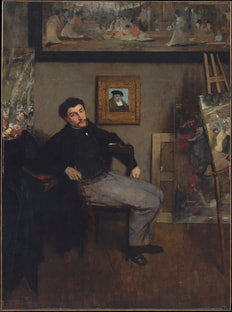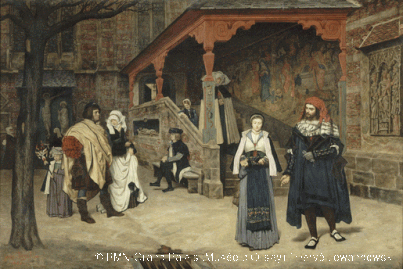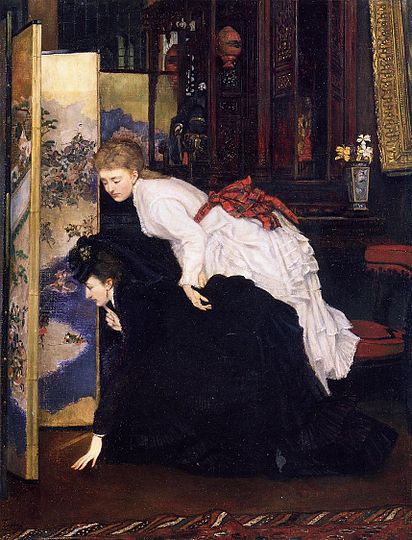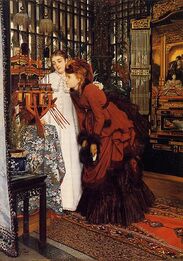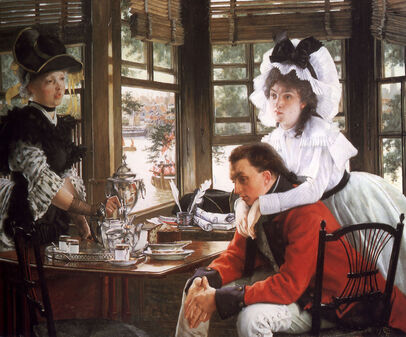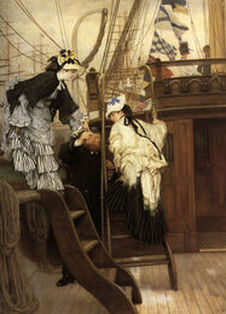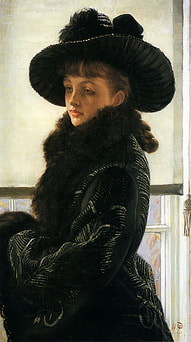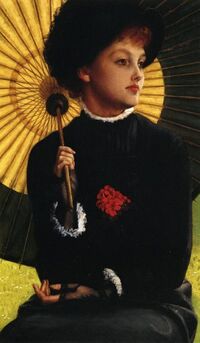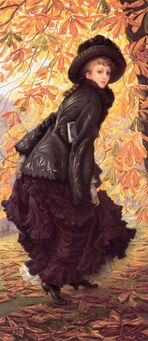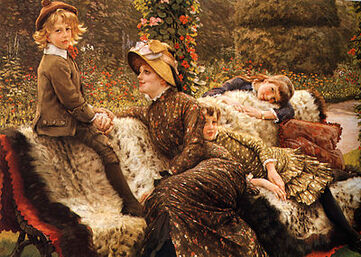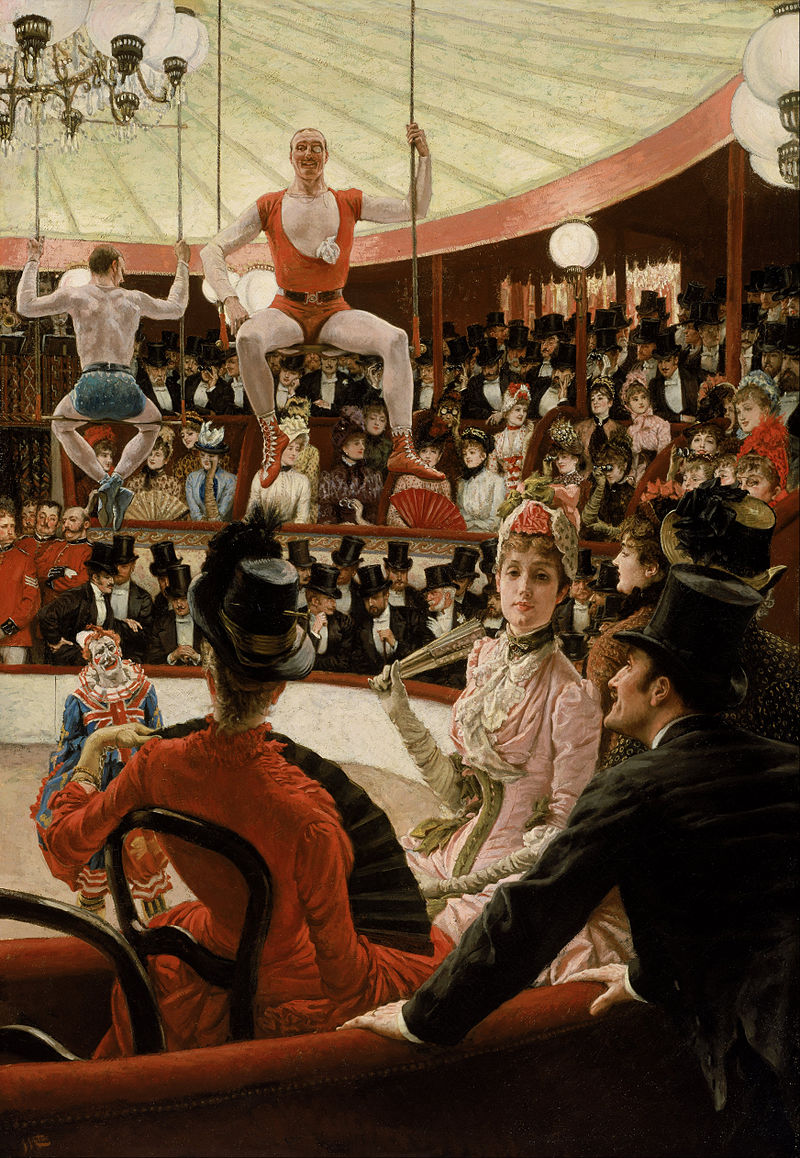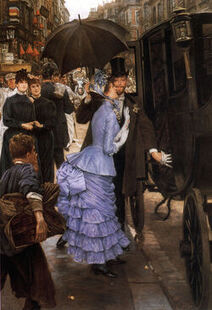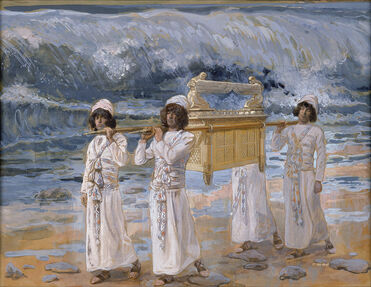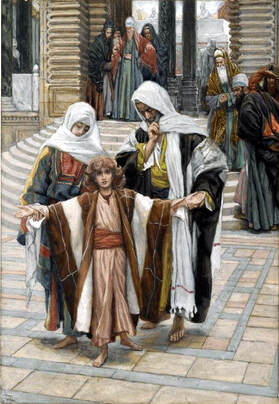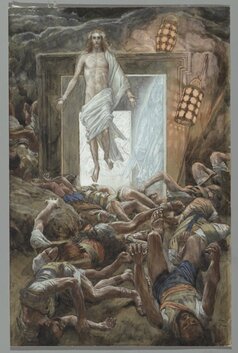|
name: James Tissot original name: Jacques-Joseph Tissot birth place: Nantes France birth date: 15 October 1836 zodiac sign: Libra death place: Chenecey-Buillon France death date: 8 August 1902 Profile of James Tissot James Tissot was a French painter and illustrator. He was a successful painter of Paris society before moving to London in 1871, where he became famous as a genre painter of fashionably dressed women shown in various scenes of everyday life. Toward the end of his life, he dedicated all his time to painting scenes and characters from the Bible after a revelation in 1888. Biography of James Tissot1856: From Nante to Paris James Tissot was born in Nantes, a bustling sea port in a well to do family of successful drapery business. By the time Tissot was 17, he knew he wanted to pursue painting as a career despite his father's opposition. An acquired Anglophile, he began using James as his first name instead of his own given name Jacques and 1854 he was commonly known as James Tissot. In 1856 or 1857, Tissot travelled to Paris to pursue an education in art at the Ecole des Beaux-Arts as well as studying in the studios of Hippolyte Flandrin and Louis Lamothe. He also studied on his own by copying works at the Louvre, as did most other artists of the time in their early years. Around this time, Tissot made the acquaintance of the American painter James McNeill Whistler, and French painters Edgar Degas with whom he would maintain long term friendship. In 1859, Tissot exhibited in the Paris Salon for the first time. He showed five paintings of scenes from the Middle Ages, many depicting scenes from Goethe's Faust. These works show the influence in his work of the Belgian painter Henri Leys (Jan August Hendrik Leys), whom Tissot had met in Antwerp earlier that same year. Other influences include the works of the German painters Peter von Cornelius and Moritz Retzsch. The French government paid 5,000 francs for his painting La Renconcontre de Faust et de Marguerite (The Meeting of Faust and Marguerite) in 1860. That same year, the young James Tissot travelled to both Italy and London, and just a few years later, the period of his interest changed suddenly from Medieval times to his own times, and his subject matters also changed to the daily life scenes of modern fashionable women. Because of that, James Tissot quickly acquired fame ,fortune as well as high critical acclaim. Meanwhile, like contemporaries such as Alfred Stevens and Claude Monet, Tissot also explored japonisme, including Japanese objects and costumes in his pictures and expressing style influence. 1871: From Paris to London: In 1970, the Franco-Prussian War broke out, James Tissot fought for his country in two regimes before he moved to London, said to have only 100 francs on him, but certainly with enough artistic and social connections from his earlier traveling and art exhibitions there to reestablish himself. As he did in Paris almost a decade later, James Tissot focus his effort on depicting beautiful women in their elegant dresses doing ladylike things, that winning formula quickly enabled him to buy a house in the area of St. John's Wood in London, where he had 'a studio with a waiting room where, at all times, there is iced champagne at the disposal of visitors', according to Edmond de Goncourt, one of the Goncourt brothers. In 1875-6, James Tissot met and fell in love with Kathleen Newton, an Irish divorcee. She moved into Tissot's household in St. John's Wood in 1876 and became the painter's mistress and muse. They lived together in a semi recluse status until her death in 1882 due to Tuberculosis. Tissot frequently referred to these years with Newton as the happiest of his life, a time when he was able to live out his dream of a family life. 1882: From London to Paris: On 9 November 1882, Kathleen Newton killed herself after her consumption got worse and worse daily, and just a week later, James Tissot left London, never to return in his life time. After returning to Paris, James Tissot tried to reestablish himself yet again with women as his protagonists, but this time in different styles, social contexts and much larger scale. In 1885,Tissot chose 15 of those large paintings for a major exhibition at the Galerie Sedelmeyer, and would call them all La Femme à Paris, representing women of different social classes as well as physical traits engaged in yet seemed aloof from a variety of social scenes and activities, from balls to circus to shops and music gardens. Unlike his previous women who idled away their life in relative solitude or familiar ambiance like decoration, the women portrayed in this series seemed a different type of Femme Nouvelle, who went out, living their life and had their own thoughts, ideas dreams. The series of La Femme à Paris also showed James Tissot's increasing affection of Japanese art, fashion and aesthetics, as he sometimes used unexpected angles and framing (like Degas with his ballet dancers) from that tradition, as if he were standing from a very close, at times intimate distance, looking at his objects. 1885-1886: Dedication to Bible:Between 1885-1886, while working on his paintings Musique sacrée, one of his series of La Femme à Paris, James Tissot had a mystic vision, that rekindled his faith in Catholic religion, and he would dedicate the rest of his life to depicting the scenes of Bible. At a time when French artists were working in impressionism, pointillism, and heavy oil washes, Tissot was moving toward realism in his watercolors. To assist in his completion of biblical illustrations, Tissot traveled to the Middle East in 1886, 1889, and 1896 to make studies of the landscape and people. His series of 365 gouache (opaque watercolor) illustrations showing the life of Christ were shown to critical acclaim and enthusiastic audiences in Paris (1894–5), London (1896) and New York (1898–9), before being bought by the Brooklyn Museum in 1900. They were published in a French edition in 1896–7 and in an English one in 1897–8, bringing Tissot vast wealth and fame. During July 1894, Tissot was awarded the Légion d'honneur, France's most prestigious medal. James Tissot spent the last years of his life working on paintings of subjects from the Old Testament. Although he never completed the series, he exhibited 80 of these paintings in Paris in 1901. 1902: DeathThe religious graphic works James Tissot created the last phase of his life not only deviated dramatically in terms of subject matters, but also demonstrated a completely different sensibility. One can even say they were done someone else other than James Tissot himself, a portraitist of belle époque elegance. It seems as if the reawakening of his religious belief had not only changed his soul, but also his paint brush. On 8 August 1902, James Tissot died in Doubs, France in the Château de Buillon, a former abbey which he had inherited from his father in 1888. His grave is in the chapel sited within the grounds of the chateau. Widespread use of his illustrations in literature and slides continued after his death with The Life of Christ and The Old Testament becoming the "definitive Bible images". His images provided a foundation for contemporary films such as the lifestyle themes in The Age of Innocence (1993). In the first half of the 20th century, there was a re-kindling of interest in his portraits of fashionable ladies and some fifty years later, these were achieving record prices.
0 Comments
Leave a Reply. |
Categories
All
Archives
December 2023
|

